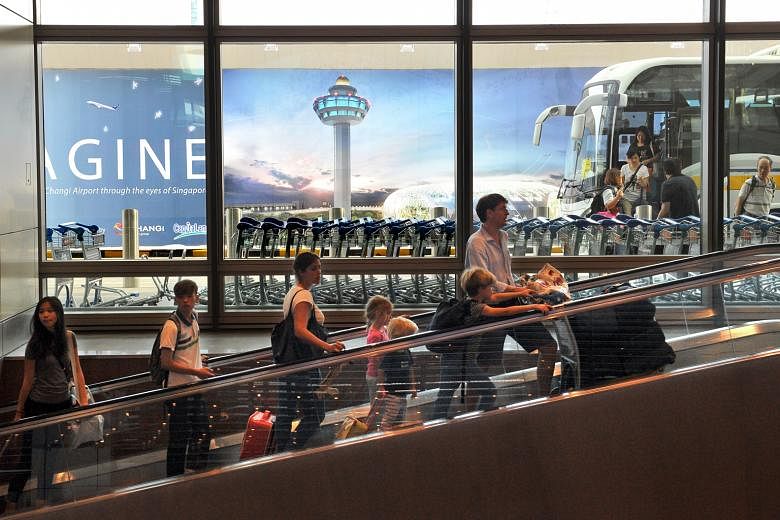Changi Airport has some catching up to do after being outstripped by global and Asia-Pacific rivals of late.
Between January and September, global international passenger traffic grew by 6.2 per cent compared with the same nine months last year.
The growth for the Asia-Pacific was higher at 8.8 per cent, based on data collated by Airports Council International, a global association with 591 members that operates 1,850 airports in 173 countries.
By comparison, Changi grew by 2.1 per cent year on year with 40.9 million passengers handled.
Among regions, Middle Eastern airports saw the strongest growth, followed by Asia-Pacific airports.
Aviation experts expect Asia to continue thriving. It is well established as the global air transport industry's largest market, with the highest share of traffic and passengers, according to the director-general of the Association of Asia Pacific Airlines Andrew Herdman.
At the association's recent annual gathering in Bali, Indonesia, he said a key challenge facing airlines in this part of the world is intense competition. "Asia-Pacific airline leaders are endeavouring to reverse recent declines in profitability, where fierce competition has resulted in reduced yields for all carriers, regardless of business model," he said.
Ultimately, airports are affected if carriers are not able to grow their business due to financial woes - as has happened to Changi Airport, which saw a slowdown in traffic numbers in the last two years due to low-cost carriers scaling back.
However, full-service carriers have been adding new destinations and flights to existing destinations.
From last month until the end of the year, about 100 new flights will be added each week, bringing the total number of weekly services at Changi to more than 6,700.
This, along with plans by some carriers to swop smaller planes for bigger jets on existing routes, will translate into more than 23,500 additional seats a week. The numbers are based on schedules pre-filed by carriers until March.
Indian carrier Jet Airways said last week it will operate a bigger plane on its daily New Delhi-Singapore flight from Nov 25. The Airbus 330 aircraft offers 50 per cent more seat capacity compared with the single-aisle Boeing 737 now deployed.


